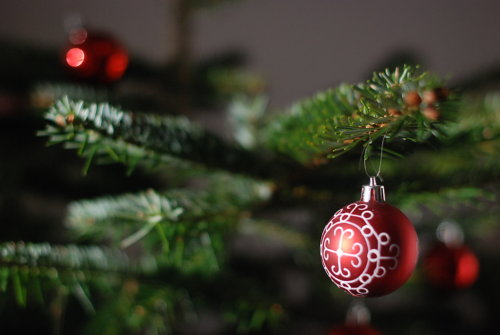Where Did the Christmas Tree Come From?
There is something especially enchanting about a Christmas tree. Even from the corner of the room, they command a certain reverence and respect. While having plants indoors in nothing unusual, Christmas trees are something different. Evergreens have always been associated with winter and rebirth–they suggest a power in nature to overcome herself, to survive the death and to endure.
In Europe, evergreens were seen as having magical properties–their ability to survive through the dark and cold was thought to indicate their ability to ward off evil and keep good health in the home. It was not uncommon in Europe for bits of evergreen to make their way indoors, long before they were trees being trimmed.
The earliest Christmastime celebrations began with observances of the winter solstice–a time when nature was especially contemplated because of its absence. Ancient Egyptians hung palm fronds to honor the sun god Ra, Romans decorated their homes with wreaths for Jupiter, Scandinavians tied ribbons in the woods to celebrate elves, and Druids hung candles in trees to honor the god of light, Balder.
The simplest theory of the Christmas tree draws on this ancestry of nature as decoration, suggesting Europeans brought trees and plants indoors as winter began in the hopes they would bloom at
Christmas time and provide a festive ornament for the holiday. With time, evergreens–being in season all year– replaced more fragile plants, and artificial decorations (like fruits) were substituted for the natural blossoms of the tree.
An alternative theory proposes an origin for the Christmas tree in the Middle Ages, at a time when Christmas Eve was marked by celebrations of Adam and Eve. Miracle plays (or saints plays) frequently occurred in the weeks leading up to December 24th and would recreate the fateful scene of Adam and Eve being cast out of Eden. Staging for the performances was quite simple– however, one crucial element was common amongst them: a paper and wood Tree of Knowledge, decorated with apples.
Some historians believe that as a way of honoring their biblical forefathers, medieval families would keep a tree decorated with apples (which were among the first decorations hung from Christmas trees) in their homes.
The first written reference to a Christmas tree in a home was not until 1605, however, when a resident of Strasburg, Germany offhandedly noted in their journal the presence of decorated firs in many parlors– Germans are widely considered the originators of the tree, beings its most staunch proponents and dispersing it across the world. Yet it was not until the 1800s that Christmas trees per se became a widespread, seasonal institution.
Though Prince Albert and Queen Victoria are credited with popularizing the Christmas tree in 1840 (Prince Albert was said to have brought the ritual with him from Germany), the custom of a holiday tree was already a familiar practice among the English royalty.
Queen Charlotte introduced the first official Christmas tree in 1800 when she replaced the traditional yew bough with a yew tree, covered it with fruit and decorations, and invited children to come and enjoy it. Forty years later, Prince Albert and Queen Victoria held a more public viewing of their Christmas tree, and an illustration of the event was produced by a newspaper and circulated in the following years, making the ceremony well known among the masses.
In America, however, the Christmas tree was not immediately welcomed into the home. New England Puritans frowned on Christmas trees as too pagan a tradition, despite one legend crediting Martin Luther, the father of Protestantism, with originating the Christmas tree in an evening of inspiration. Classic American folklore tells of George Washington sneaking up on German troops gathered around a Christmas tree in 1776– Christmas trees were associated with the old ways of Europe.
Yet as the image of Prince Albert and Queen Victoria’s Christmas tree was distributed in the states and as the influx of European immigrants undermined the dominance of the New England Puritan ideals, Americans gave up their Scrooge-like ways and embraced the Christmas tree such that today it is an institution.
What began simply as a festive addition– either to celebrate the occasion or to accompany the tale of Adam and Eve–has now become the centerpiece of the holiday. Christmas trees have their own ceremonies now: the careful perusal of the lot looking for one that’s just right, the complicated mechanisms of trying to get it home, the ritual of decoration, the discovery of pine needles in every corner for weeks. Though its origins may now be distant and consumed by time, Christmas trees serve as a reminder to bring the garden into our lives– if only but once a year.




































